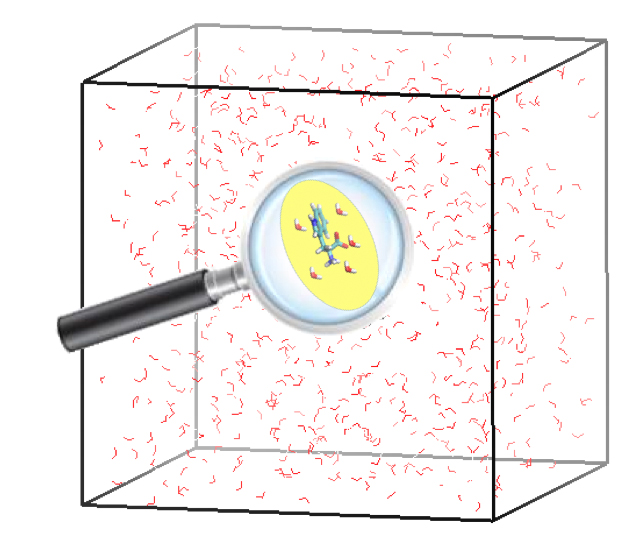Purpose-Driven Spectroscopy

Focusing on only a part of special interest in vibrational spectra is a promising way of reducing the computational effort for the calculation of such spectra. One such approach is the so-called ‘Intensity-Tracking’, which can be used to selectively converge high-intensity bands in vibrational spectra, using the concept of intensity-carrying modes. Other directions have dealt with relativistic quantum chemistry, real-time propagation for excited states and on- and off-resonance spectra or subsystem density functional theory for the calculation of local properties and computational speed-up.
Selected Publications
- Luber, S.; Neugebauer, J.; Reiher, M. Intensity-Tracking for Theoretical Infrared Spectroscopy of Large Molecules J. Chem. Phys. 2009, 130, 064105.
- Luber, S.; Reiher, M.; Intensity-carrying modes in Raman and Raman optical activity spectroscopy ChemPhysChem 2009, 10, 2049-2057.
- Luber, S.; Malkin Ondík, I.; Reiher, M. Electromagnetic fields in relativistic one-particle equations Chem. Phys. 2009, 356, 205-218.
- Luber, S. Local Electric Dipole Moments for Molecular Periodic Systems via Density Functional Theory Embedding J. Chem. Phys. 2014, 141, 234110.
- Mattiat, J and Luber, S. Efficient calculation of (resonance) Raman spectra and excitation profiles with real-time propagation J. Chem. Phys. 2018, 194, 174108
- Mattiat, J., Luber, S. Electronic circular dichroism with real time time dependent density functional theory: Propagator formalism and gauge dependence Chemical Physics, 2019, 527 (1 November 2019), 110464